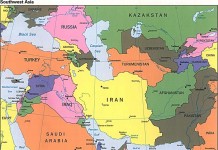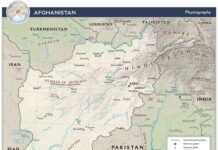
Context
As the reach of the coronavirus deepens – so does the need to understand the extent of its geopolitical implications. While the most recent focus has been on the health and economic shock, little has been understood about the geopolitical and defense related repercussions.
Some of this could be due to the time needed to assess the damage; the other may have to do with safeguarding the strategic policies and postures. Some recent estimates suggest that over 10 years, the economic loses for US could add up to about $11 trillion in an optimistic scenario, and $19 trillion in a worse case scenario.
Obviously, economic prowess influences the political dynamics and defense postures. If one reveals how a nations defense capabilities have been compromised, then possibly this could become a leverage for the adversary. Since all nations have been negatively impacted by the still spreading coronavirus, the question becomes what capabilities are affected more. And associated with this exercise is the process of exploring options to recover or replace such capabilities – for the short and long term.
While there are many dimensions of this assessment, the main attempt is to recalibrate the global balance power. For example, one such critical inquiry relates to the campaign against extremism that is being fought in various theaters, but primarily in the Middle East, North Africa, and South and Central Asia. As noted before, the war against extremism has been intertwined for some time now with the global balance of power of tussle.
Some of the key related questions in this regard are:
- How will the Syrian conflict be impacted if the major stakeholders like Iran, Turkey, and Russia are busy dealing with the COVID-19 issues? The civil war is brewing there and the nation’s health care systems is in ruins. According to UN Refugee Agency, there 6.6 internally displaced persons in Syria, while 5.6 million people have fled Syria since the conflict began in 2011, seeking refuge in Lebanon, Turkey, Jordon and beyond.
- How will the situation of Yemen evolve, as Iran and Saudi Arabia now have to deal with challenges deriving from COVID-19? According to Save the Children charity organization 85,000 children may have died between 2015 and 2018 due to severe malnutrition. About 80% of Yemen’s 24 million population needed humanitarian assistance even before the coronavirus arrived. While Iran was already under sanctions, the drop of oil prices will likely curtail Saudi ambitions. Meanwhile, there are media reports that Yemen peace process is making major headway.
- In Libya, a previously agreed temporary peace has fallen apart and hostilities between the warring factions have escalated. A UN migration agency has indicated that Libya is ill prepared to deal with coronavirus and it could be catastrophic for the internally displaced people (IDP) and about 700,000 refugees and migrants there.
- The Iraq situation was already under political stress with the government unable to deliver to people resulting in protests. The Iraqi officials are concealing the real number of infections because that could once again ignite public disorder. Iraq’s neighbor Iran was hit hard early by the pandemic and Iraq receives many religious pilgrims from across the region. Both Iran and the US may have to reevaluate their positions in Iraq as they deal with the aftershocks of coronavirus. Meanwhile, reports indicate that Iran militants have increased rocket attacks on US bases.
- The peace agreement was reached between the US and Taliban on February 29, just as coronavirus was picking pace in Europe. This is pressurizing all immediate stakeholders, to include the Afghan government, Taliban, Pakistan and the US, to not let the peace process stall under the circumstances.
For example, since the agreement was reached the disunity of the Afghan government has been apparent. More so, it refused to release 5,000 Afghan Taliban prisoners promised in the US-Taliban deal. To pressure the Ashraf Ghani’s government, US went as far as threatening to withhold $2 billion dollars of US aid to Afghanistan. The American patience is likely to decrease even further in the evolving situation resulting from the coronavirus. - At this stage, it is not clear how much will with the pandemic impact India and Pakistan related matters. Nonetheless, focus on dealing with the pandemic could mean less Indian focus on Afghanistan, and increased militant activity in Indian held Kashmir, where India has put the entire population under a security lockdown since 2019 for different sets of reasons. Recent easing of the security and communication lockdown in Kashmir is direclty linked to the pressures exerted by the infectious disease.
Non-State Actors
While the impact on state actors overtime is measurable, it’s unclear how the non-state actors and proxies will be handling the indiscriminate reach of the virus. With lack of immediate medical assistance, and the backers of various proxies distracted by their own economic woes, one can assume dismal consequences.
However, past conflicts indicate that while there may be a temporary slowdown in conflicts due to the spread of disease, such as notably during Spanish Flu of 1918, ultimately the rivalries continued with each side trying to exploit the circumstances. Nonetheless, at least in Afghanistan and Yemen there is movement towards peace. However, there is also a risk of Arab Spring style public disturbances if the governments involved in the campaign against extremism are unable to deal amicably with the reach of coronavirus. And the refugees and internally displaced persons are likely to suffer greatly.
While US is busy dealing with its own health and economic emergency, its China that is extending its geopolitical influence by offering medical and humanitarian assistance to the needy in the war ravaged nations.



